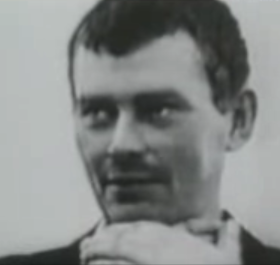Gennady Mikhasevich
Gennady Mikhasevich was a Soviet serial killer who committed his crimes in the Vitebsk region of the Byelorussian SSR, now Belarus, between 1971 and 1985. Mikhasevich strangled to death at least 36 women, making him one of the most prolific serial killers in Soviet history. His case is notable not only for the number of his victims but also for the extensive investigation that led to his capture, as well as the social and political context in which his crimes occurred.
Early Life[edit | edit source]
Gennady Mikhasevich was born in 1947 in the village of Sosnovka, Vitebsk region. Little is known about his early life, but it is reported that he had a normal upbringing without any significant incidents that would hint at his future criminal activities.
Crimes[edit | edit source]
Mikhasevich's killing spree began in 1971. His victims were mostly young women whom he attacked in secluded areas. He would typically strangle them using a rope or a belt and then attempt to conceal the crime by setting the bodies on fire or hiding them. Mikhasevich was also known to return to the crime scenes or the funerals of his victims, blending in with the mourners to avoid suspicion.
The investigation into the murders was one of the largest in the history of the Soviet Union, involving thousands of police officers and significant resources. However, Mikhasevich managed to evade capture for years, partly because he was a respected member of the local community, a volunteer policeman, and had even received commendations for his assistance in the investigation of the crimes he had committed.
Capture and Trial[edit | edit source]
Mikhasevich was finally apprehended in 1985 after a detailed analysis of the crimes and the testimonies of witnesses led investigators to him. During his trial, he confessed to 36 murders, although some sources suggest he may have been responsible for more. He was convicted of his crimes and sentenced to death. Mikhasevich was executed by shooting in 1987.
Impact[edit | edit source]
The case of Gennady Mikhasevich had a profound impact on Soviet society and the criminal justice system. It exposed flaws in the investigative processes and led to increased scrutiny of how law enforcement agencies operated. Additionally, the case raised public awareness about serial killers in the Soviet Union, a topic that had been relatively unacknowledged by the state media and authorities.
In Popular Culture[edit | edit source]
Mikhasevich's crimes and the subsequent investigation have been the subject of various books, documentaries, and articles, contributing to the fascination with true crime stories in post-Soviet states.
See Also[edit | edit source]
Search WikiMD
Ad.Tired of being Overweight? Try W8MD's physician weight loss program.
Semaglutide (Ozempic / Wegovy and Tirzepatide (Mounjaro / Zepbound) available.
Advertise on WikiMD
|
WikiMD's Wellness Encyclopedia |
| Let Food Be Thy Medicine Medicine Thy Food - Hippocrates |
Translate this page: - East Asian
中文,
日本,
한국어,
South Asian
हिन्दी,
தமிழ்,
తెలుగు,
Urdu,
ಕನ್ನಡ,
Southeast Asian
Indonesian,
Vietnamese,
Thai,
မြန်မာဘာသာ,
বাংলা
European
español,
Deutsch,
français,
Greek,
português do Brasil,
polski,
română,
русский,
Nederlands,
norsk,
svenska,
suomi,
Italian
Middle Eastern & African
عربى,
Turkish,
Persian,
Hebrew,
Afrikaans,
isiZulu,
Kiswahili,
Other
Bulgarian,
Hungarian,
Czech,
Swedish,
മലയാളം,
मराठी,
ਪੰਜਾਬੀ,
ગુજરાતી,
Portuguese,
Ukrainian
Medical Disclaimer: WikiMD is not a substitute for professional medical advice. The information on WikiMD is provided as an information resource only, may be incorrect, outdated or misleading, and is not to be used or relied on for any diagnostic or treatment purposes. Please consult your health care provider before making any healthcare decisions or for guidance about a specific medical condition. WikiMD expressly disclaims responsibility, and shall have no liability, for any damages, loss, injury, or liability whatsoever suffered as a result of your reliance on the information contained in this site. By visiting this site you agree to the foregoing terms and conditions, which may from time to time be changed or supplemented by WikiMD. If you do not agree to the foregoing terms and conditions, you should not enter or use this site. See full disclaimer.
Credits:Most images are courtesy of Wikimedia commons, and templates, categories Wikipedia, licensed under CC BY SA or similar.
Contributors: Prab R. Tumpati, MD

